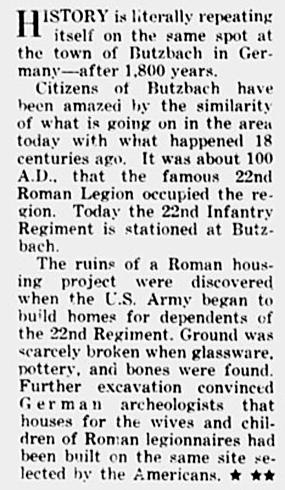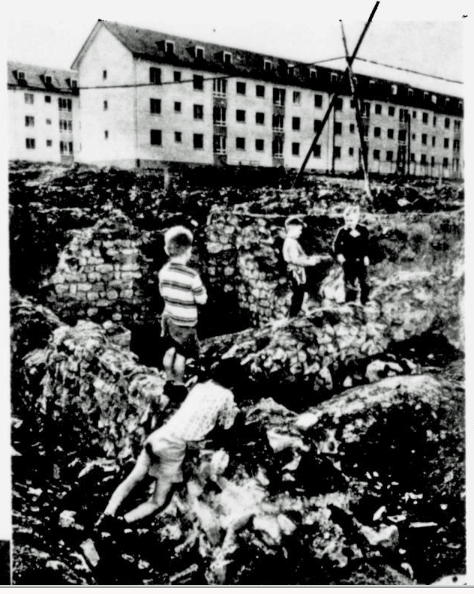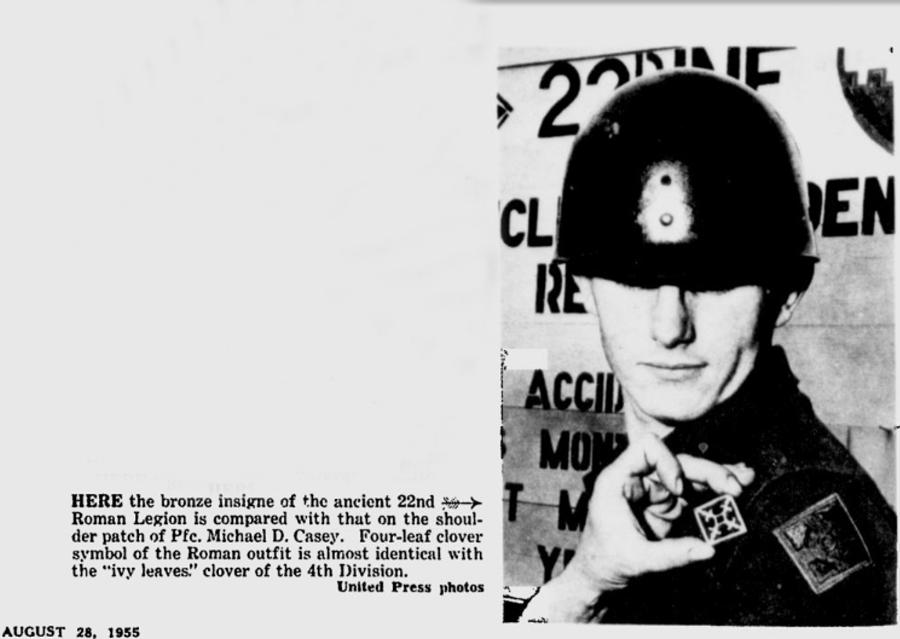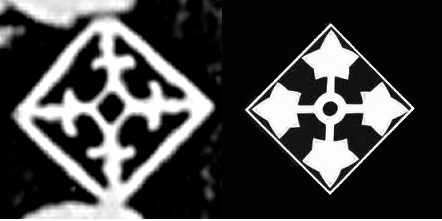![]() 1st Battalion 22nd Infantry
1st Battalion 22nd Infantry ![]()
The 22nd Infantry and the 22nd Legion
The 22nd Infantry Regiment was
stationed in Germany from 1951-1956. In 1955 the Regiment
had its headquarters at Kirch-Göns, and was in the process of
building quarters for the dependents
and families of its Soldiers in Butzbach, about 3 kilometers to
the south.
Early in the process of clearing
the land for construction, the site chosen revealed previous
construction
which turned out to have been done by the Romans some 1800 years
before.
Artifacts recovered indicated the site had been the home of the Roman 22nd Legion (Legio XXII Primigenia).
"Legio XXII
Primigenia (Latin for "Twenty-second legion
Primigenia", dedicated to the goddess Fortuna Primigenia)
was a Roman legion levied by Roman Emperor Caligula in 39, for
his campaigns in Germania. There are still records
of the XXII Primigenia in Mogontiacum (modern Mainz) from the end
of 3rd century.
...Around 90,
units of the XXII were garrisoned in or around the area of
modern-day Butzbach,
as part of the Limes Germanicus (a series of forts along the
Roman frontier of Germania Superior." ¹
Colonel Max Schneider was the
Commander of the 22nd Infantry at that time, and he halted
construction
of the dependents' quarters, as evidenced by the following
passage:
"The
legion had the task of guarding the "lime" (Imperial
boundary line) around 100 AD and sent its cohorts out to
construct forts
and watchtowers along that boundary line. One of their
semi-permanent forts was unearthed in nearby Butzbach when the
22nd Infantry Regiment was constructing housing for NCOs.
Schneider ordered work on the project to stop while German
archaeologists
excavated the site. Another site is known to have existed in
nearby Friedberg. It seems as if the 4th Infantry Division was
once again
"guarding the lime" just as the Romans had done, at
least in spirit if not in fact. In another odd coincidence, one
of the emblems of the
XXII Roman Legion (four clover leaves at the ends of an
equilateral cross enclosed by a diamond shaped border) unearthed
by
German archaeologists is almost identical to the shoulder patch
of the 4th Infantry Division (four ivy leaves at the ends of an
equilateral cross
enclosed by a diamond shaped border) worn by members of the 22nd
Infantry Regiment." ²
In the August 28, 1955 edition
of the Toledo Blade newspaper the following article and photos
about the discovery were published:




|
The brick in the discovered
ruins The motto of the 22nd Infantry The motto of the 22nd Infantry
is The motto "Semper
Fide" must The 11th Infantry was stationed
|

Above:
The insignia of the Roman 22nd Legion being compared to the 4th
Infantry Division SSI.
It is not likely the Legion would have used a "four leaf
clover" in their design, as stated in the caption. . The
design actually looks more like
fleur-de-lis, which, of course would not have been used by the
Legion either. It is more likely the design is actually meant to
represent
spearpoints or something equally martial. However, whatever it
is, it is uncanny how closely the design resembles the 4ID SSI.
Note the 22nd Infantry sign in the background of the above photo. The 22nd Infantry DUI can just be seen in the upper right.
|
Above: The 4th Division SSI |

The emblems of the 22nd Legion and the 4th Division compared
The 1st Battalion website wishes to thank
Daniel Peterson, Curator of the Don F. Pratt Memorial Museum
at Fort Campbell, Kentucky, for calling this important historical
episode to our attention.
He is also the author of The Roman Legions Recreated in Colour Photographs
¹ From the Wikipedia website ------------------------------------------------------------------
² My Father's War by Jim Schneider, Publisher Lulu.com ISBN 1300783044, 9781300783046
Home | Photos | Battles & History | Current |
Rosters & Reports | Medal of Honor | Killed
in Action |
Personnel Locator | Commanders | Station
List | Campaigns |
Honors | Insignia & Memorabilia | 4-42
Artillery | Taps |
What's New | Editorial | Links |